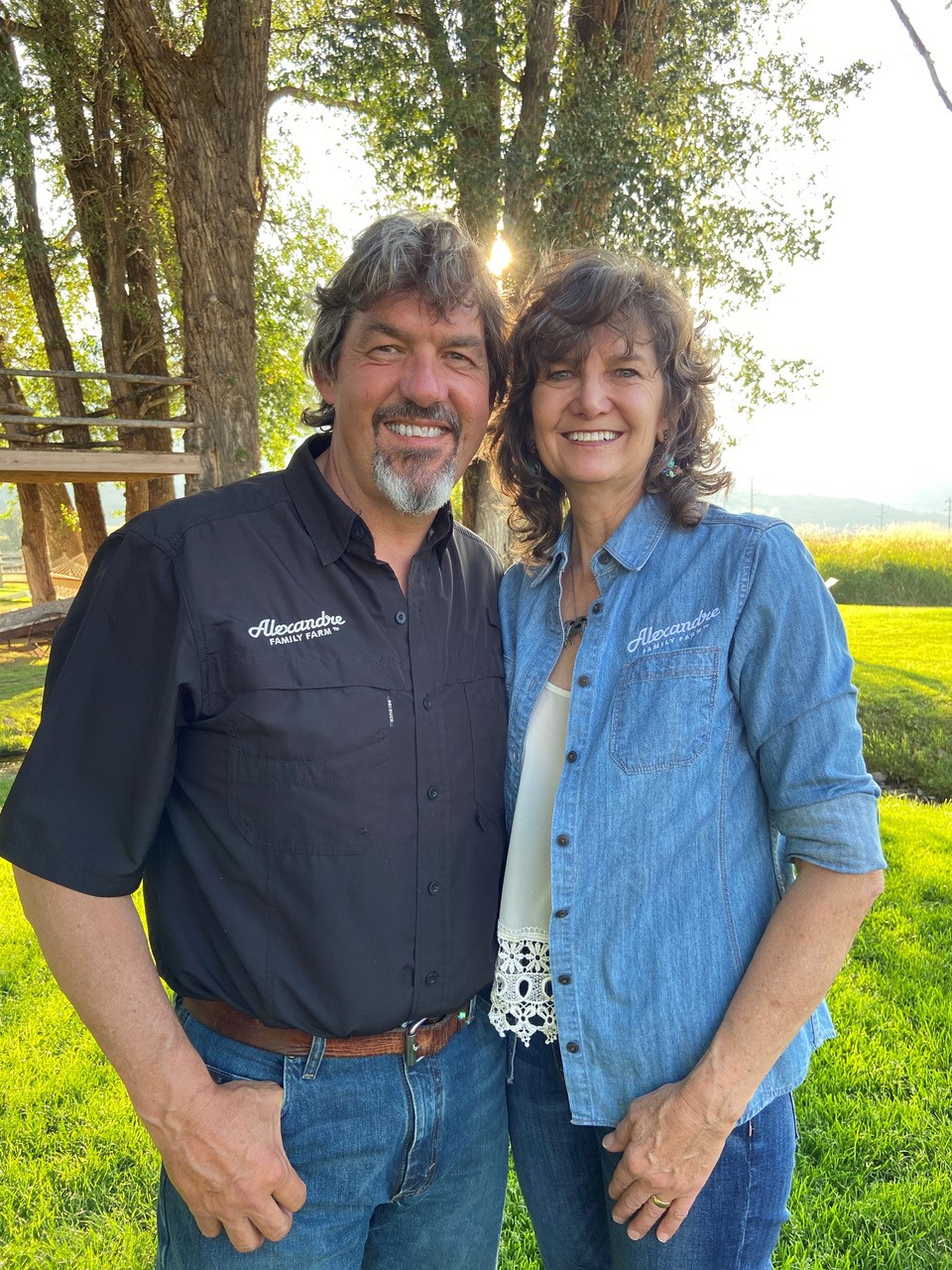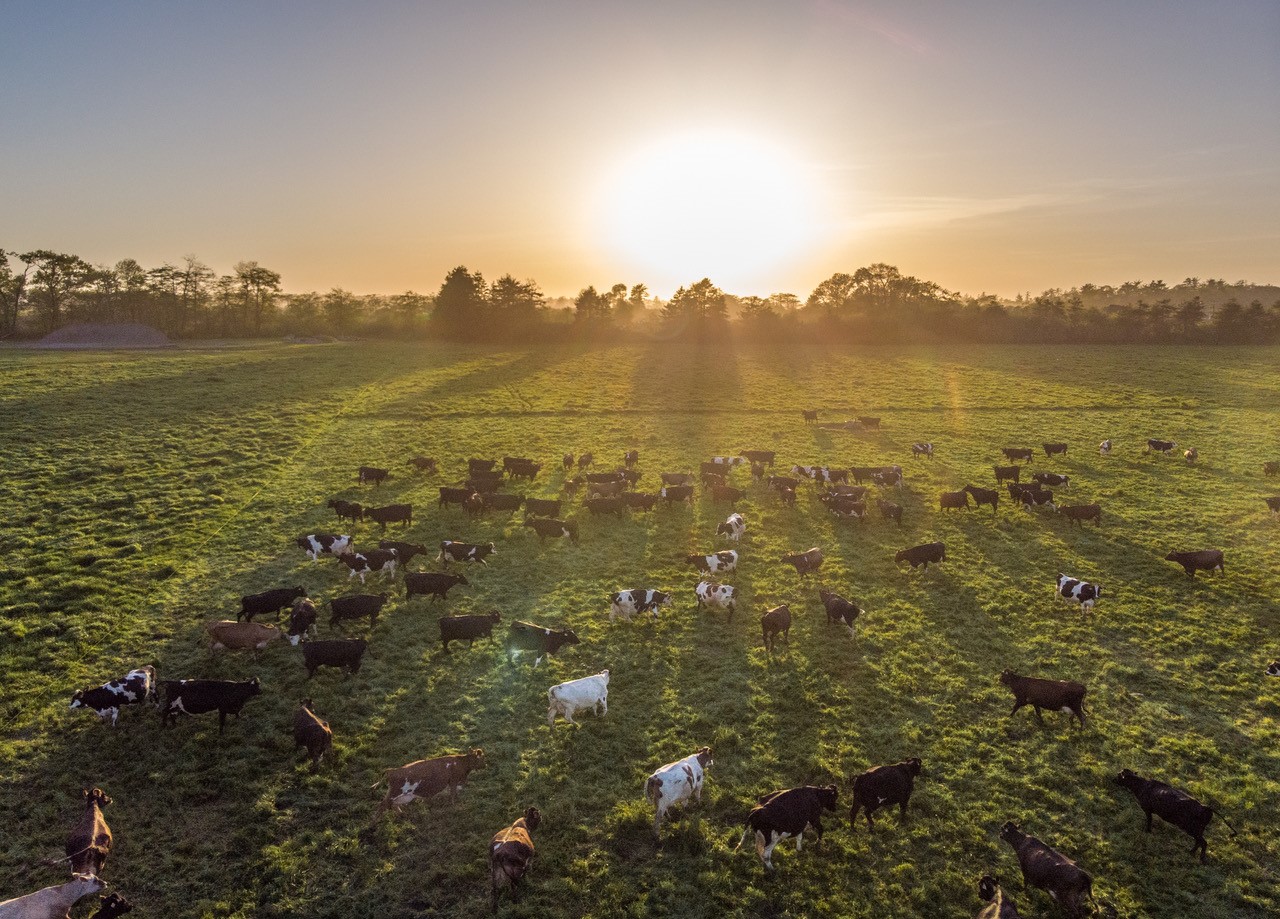It’s not as if owners Blake and Stephanie Alexandre were new to dairy—both grew up on dairy farms and both are 4th generation farmers. But they took a turn in the late 1990s, converting their dairy to organic production—embracing practices their grandparents used—to create a flourishing ecosystem on 4,300 acres in northern California, a mile from the Pacific Ocean. The first dairy in the U.S. to receive Regenerative Organic Certification (ROC) in January 2021, Alexandre Family Farm encompasses a brand selling organic 100% A2/A2 milk and yogurt (from grass-fed cows) and an organic-pastured egg business. The land includes a thriving wildlife habitat, where elk, Aleutian geese, salmon, and over 240 species of birds (including bald eagles) enjoy and revitalize the chemical-free ecosystem.
The couple hope to set a new standard for organic dairy while building a viable livelihood for their children—four of whom work on the farm. All in the family attended Cal Poly and studied agriculture. But “Our Cal Poly education focused on high-yield production agriculture,” Stephanie said, “not soil biology.”
“We got into organic for the money,” Blake said. “We couldn’t compete as grass-based dairy farmers without going organic.” They educated themselves about organic and regenerative agriculture.
“Blake became interested in the soil biology, and I in nutrition density,” Stephanie added. “Though motivated by the organic premiums, we became passionate about the health and organic aspects hook, line, and sinker.”
They began selling organic milk in 2001; in 2017 they took the leap and created their own brand, selling A2/A2 milk. Alexandre Family Farm encompasses 9,000 acres, including certified organic land in three different counties; 4,500 mature cows (4,000 calves/heifers) graze on two coastal counties, and organic hay is grown in the third county. Five grass-based dairy locations, creamery, and brand are managed by 150 employees.
Twice a day, after milking, the cows are moved to new pasture within a rotational grazing system the Alexandres use as part of their regenerative practices. The timing of which pasture the cows should graze next is a complex orchestration in which the Alexandres consider grass height, cow dietary requirements, and soil needs. The cows’ eating the grass not only feeds them but plays an important role in the “pulsing” of the grass above and roots below, which helps feed the soil microbiome.
The microorganism-rich soil keeps the pastures healthy and resilient, capable of producing nutrient-dense organic milk and eggs. The farm’s soil organic matter (SOM) has risen from 2-3 percent to 8-12 percent in the last 30 years—and up to 15 percent in places. SOM sequesters carbon and retains water, so less irrigation is required. Only compost and nutrient water are used as soil amendments—the farm makes its compost, using manure solids, wood shavings from a local mill, and fish waste from local fisheries. The “nearly odorless” nutrient water (liquid manure) is stored in holding ponds.
What is A2/A2 milk?
A2/A2 refers to milk containing only the A2 beta-casein protein and missing the A1 beta-casein protein found in most commercially available milk today. A2 is the main protein found in all mammals, including human and goat’s milk, and is easily digestible. A1 can be difficult to digest causing milk intolerance symptoms and inflammation.
Using specific cow breeds, Blake and Stephanie began to breed the A1 variant out of their livestock to produce a composite A2/A2 cow producing a high protein, high butterfat, nutrient-dense milk with no A1 beta-casein. “Our A2/A2 organic milk contains 6% butterfat, compared to whole milk’s 3.5%,” said Stephanie. “We use a slow pasteurization process that creates an old-fashioned, very nutritious product.”
The farm offers 100% grass-fed organic milk, 6% and 2% milk, cream, yogurts, kefirs, and organic pasture-raised eggs. The milk has high levels of Omega 3s, CLAs (conjugated linoleic acids), and higher protein than other milk.

Blake and Stephanie Alexandre
Pioneering with the Regenerative Organic Alliance
Alexandre Family Farm began collaborating with the Regenerative Organic Alliance and Savory Institute Land to Market five years ago and became one of the first pilot farms in the ROC rollout. “The protocols were familiar to us—that’s the way we had been farming for years,” Blake said. The ROC standard’s high bar requires continuous access to pasture, a high percentage of grass feed, animal welfare, free-style barns or pasture, and a living minimum wage.
The couple hope their success with their farming practices will prove that regenerative farming can be done at scale, on larger dairies. The organic dairy model needs to work for small farmers too, to help solve the financial crisis in agriculture, Blake pointed out. “We want to get farmers the money they need, to make this work.”
Careful navigation for success
To achieve financial stability in an industry facing extreme pressure, “We wear many hats,” Blake said. “We work hard and smart. We can’t afford to make many wrong moves in this business. But our team is a team at every turn—dedicated, enthusiastic, and we treat them well.”
“Our biggest current challenge is refinancing,” Stephanie said. “We’ve bet the farm on the brand. The current economic environment of the industry is challenging, for sure.”
But the rewards of solvency and using practices that support their customers, the soil and the longevity of the land and farm, are a wonderful payoff.





